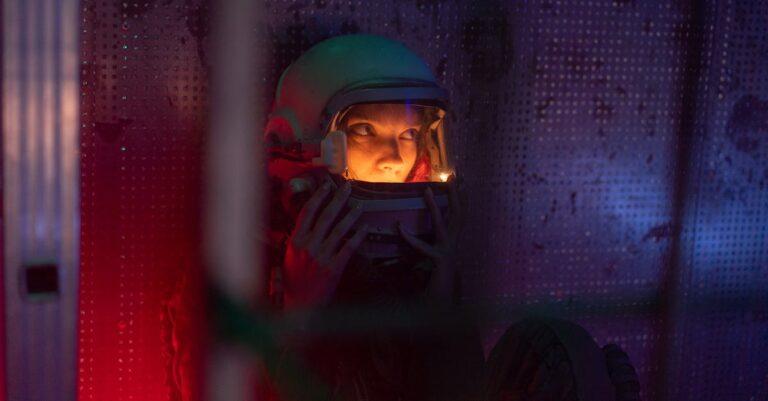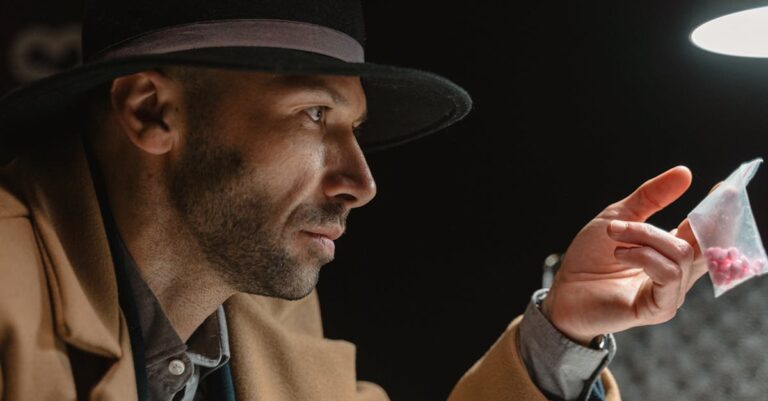
The first time Dr. Elara Voss touched the fragment, it pulsed like a heartbeat. She’d found it buried in the rubble of a derelict research station on Kodiak Island, its jagged edges glinting under the harsh fluorescent lights of the lab. The other scientists called it a relic, a discarded artifact from a failed experiment in the 1980s. But Elara saw something else—a pattern in the way the crystal refracted light, as if it were trying to communicate.
“It’s just glass,” Dr. Kessler muttered, adjusting his glasses as he peered at the fragment through a magnifier. His voice was dry, edged with skepticism. “No energy signature. No biological markers.”
Elara ignored him. She ran a gloved finger along the crystal’s surface, feeling a faint vibration beneath her touch. The lab’s hum seemed to fade, replaced by a low, resonant tone that made her bones hum. She pulled her hand back, heart racing.
“Did you feel that?” she asked, turning to Dr. Marquez, the team’s biochemist. His dark eyes were fixed on the fragment, his brow furrowed.
“Felt what?” Marquez asked, but his voice lacked its usual sharpness. He stepped closer, tilting his head as if listening. The air between them thickened, charged with an unspoken tension.
The next day, Elara returned to the lab alone. The fragment sat on a stainless-steel tray, its surface now glowing faintly, a deep indigo that shifted to violet at the edges. She reached for it again, this time without hesitation. The vibration was stronger this time, a rhythmic pulse that matched her own heartbeat. A flicker of light danced across the walls, casting shadows that moved independently of the lab’s overhead lights.
“This isn’t natural,” she whispered, her breath fogging in the cold air. The crystal’s glow intensified, and for a moment, she thought she saw shapes within it—faint, fluid forms that dissolved when she focused on them. A memory surfaced, unbidden: her mother’s voice, low and urgent, warning her never to trust anything that shimmered too brightly.
She pulled back, her hands trembling. The fragment’s glow dimmed, but the shadows remained, lingering in the corners of the room. When she turned, Marquez was there, his expression unreadable.
“You shouldn’t be here alone,” he said, but his tone was not reprimanding. It was as if he’d been waiting for her.
The experiments began soon after. The team subjected the fragment to every test they could think of—spectroscopy, electron microscopy, even exposure to extreme temperatures. Nothing altered its structure. It absorbed energy but did not decay. It responded to sound, vibrating in harmony with certain frequencies. And it always returned to the same pattern of light, a spiral that seemed to unfold and contract like a living thing.
“It’s not just reacting,” Marquez said one evening, his fingers tracing the edges of the fragment. “It’s… learning.”
Elara didn’t argue. She’d seen the changes in herself—how her dreams had grown vivid, filled with impossible landscapes and voices that spoke in languages she didn’t understand. The fragment had become a part of her, a silent companion that whispered when she was alone.
But the others weren’t so sure. Kessler grew increasingly agitated, his once-measured demeanor fraying at the edges. He accused Elara of letting the fragment influence her, of losing herself in its glow. “You think you’re studying it,” he snapped one night, his face shadowed by the lab’s flickering lights. “But it’s studying you.”
Elara didn’t answer. She couldn’t explain the way the fragment seemed to understand her, how it responded to her emotions. When she was afraid, it dimmed. When she was calm, it pulsed with a steady, reassuring light. It was as if it were a mirror, reflecting back the parts of herself she’d long since buried.
The breakthrough came on the third week. Marquez discovered that the fragment’s light patterns correlated with neural activity in the human brain. They ran tests, monitoring brain waves as subjects interacted with the crystal. The results were impossible—patterns that defied known physics, suggesting a direct link between the fragment and the mind.
“This is it,” Marquez said, his voice shaking. “We’ve found something beyond science. Beyond understanding.”
But Elara wasn’t sure it was a discovery. It felt more like a revelation, one that had been waiting for them all along. The fragment wasn’t just a tool; it was a key, and they were the ones unlocking a door they didn’t know existed.
The final test was simple: to see if the fragment could transmit thoughts. Elara volunteered, her hand trembling as she placed it against the crystal’s surface. The room went silent, the hum of machinery fading into nothingness. Then, a voice—her own, but not quite. It spoke in fragments, ideas that weren’t hers but felt intimately familiar.
“It’s not just a message,” she said, her voice barely above a whisper. “It’s a conversation.”
Kessler’s face twisted in something between fear and fascination. “We should destroy it,” he said, but his hands were already moving, typing furiously on the terminal. “Before it’s too late.”
“Too late for what?” Marquez asked, his eyes fixed on the fragment. “For us to understand? For us to become something more?”
The fragment’s light flared, casting the room in a soft, otherworldly glow. Elara felt a pull, a sensation of being drawn into its depths. She didn’t resist. Whatever waited on the other side, she was ready.
The last thing she remembered was the sound of her own heartbeat, steady and sure, as the light consumed her.


